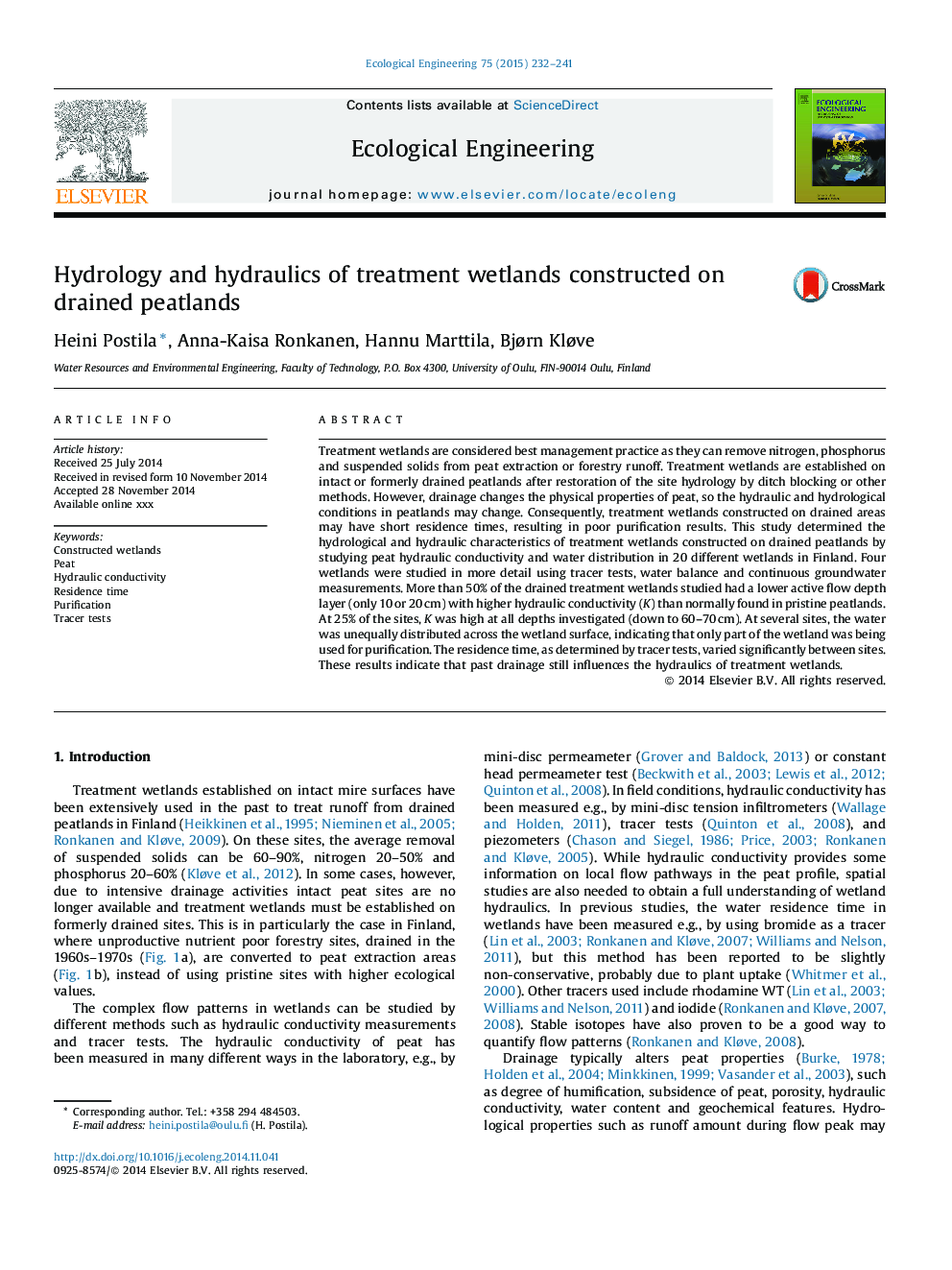| Article ID | Journal | Published Year | Pages | File Type |
|---|---|---|---|---|
| 6301707 | Ecological Engineering | 2015 | 10 Pages |
Abstract
Treatment wetlands are considered best management practice as they can remove nitrogen, phosphorus and suspended solids from peat extraction or forestry runoff. Treatment wetlands are established on intact or formerly drained peatlands after restoration of the site hydrology by ditch blocking or other methods. However, drainage changes the physical properties of peat, so the hydraulic and hydrological conditions in peatlands may change. Consequently, treatment wetlands constructed on drained areas may have short residence times, resulting in poor purification results. This study determined the hydrological and hydraulic characteristics of treatment wetlands constructed on drained peatlands by studying peat hydraulic conductivity and water distribution in 20 different wetlands in Finland. Four wetlands were studied in more detail using tracer tests, water balance and continuous groundwater measurements. More than 50% of the drained treatment wetlands studied had a lower active flow depth layer (only 10 or 20Â cm) with higher hydraulic conductivity (K) than normally found in pristine peatlands. At 25% of the sites, K was high at all depths investigated (down to 60-70Â cm). At several sites, the water was unequally distributed across the wetland surface, indicating that only part of the wetland was being used for purification. The residence time, as determined by tracer tests, varied significantly between sites. These results indicate that past drainage still influences the hydraulics of treatment wetlands.
Related Topics
Life Sciences
Agricultural and Biological Sciences
Ecology, Evolution, Behavior and Systematics
Authors
Heini Postila, Anna-Kaisa Ronkanen, Hannu Marttila, Bjørn Kløve,
